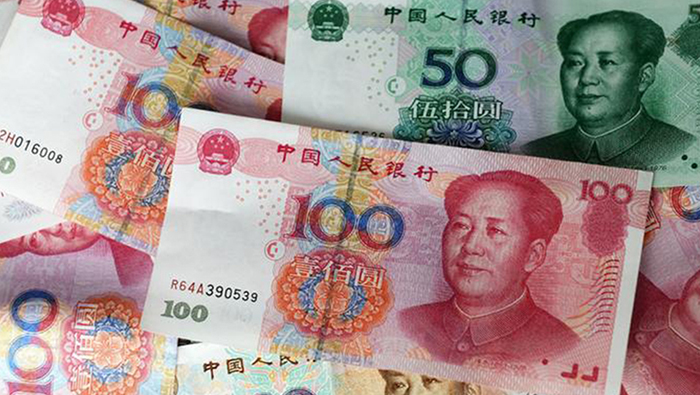
When the Financial Times claimed China's $13 trillion (€11.7 trillion) onshore bond market had become "an unlikely sanctuary," some eyebrows were raised. Given the timing and scale of the COVID-19 impact on China's economy, few expected it.
But become one it has. As of the end of March, some 822 non-Chinese investors held 2.26 trillion yuan ($319 billion, €280 billion) in Chinese central government debt, down from the record 2.28 trillion yuan at the end of February, but up a whopping 28% in the first quarter year-on-year.
Foreign investors remain a small percentage of the $13 trillion market, at 2.3%, compared with the United States' 28%, much of it Chinese-owned, but this is changing.
While China's GDP fell 6.8% in the first quarter, the IMF is forecasting a recovery to 1.2% growth for all 2020, unlike most global economies, in positive territory. Exports, which make up 18% of GDP, are expected to fall by up to half in the first quarter, and industrial profits by 25% in the first half after retail sales and investment in fixed assets fell 20% in Q1. But while Beijing has yet to sign off on a fiscal boost programme, it is only a matter of time, observers say, with central bank purchases of bonds one of the likely options.
Diamonds are forever: Yield gap widens
The uncertainty caused by the spread of the coronavirus and the ongoing US-China trade spat has driven investors to shift assets into the largest and most liquid bond markets: US Treasuries, German bonds and Japanese government bonds. "World sentiment toward China is improving due to its early containment of the coronavirus outbreak, and this is making Chinese bonds look like a shelter in the global storm," said BNP's Chi Lo.
But monetary policymakers also pushed interest rates to new lows, with negative rates in Japan and parts of Europe, sending bond yields down. The yield on the 10-year US Treasury, for example, has dropped by 95 basis points since mid-February. Risk aversion in the market drove down the yield of US 10-year Treasury bonds to less than 1% from over 1.8% at the start of 2020. The yield on Germany's 10-year government bonds fell deeper into negative territory at -0.6%, down from -0.2% earlier this year.
Despite dropping to a record low of 2.47%, Chinese 10-year government bonds continue to have an advantage over their rivals. The yield of China's 10-year government bonds traded between 2.8-3% during the first quarter of 2020 and is widely seen increasing to 3.3% by the end of 2020, according to MRB Partners. The yield spread between Chinese 10-year government bonds and US 10-year Treasury bonds rose to 175 basis points, up from around 42 basis points a year ago.
"China bonds appear attractive to foreign investors given the yield pickup China offers versus developed market sovereigns," said Lucy Qiu, emerging markets strategist at UBS Global Wealth Management in a recent interview with Xinhua.
For your eyes only: Sentiment changing
Investors are also turning positive on China's economy, with Morgan Stanley raising its overweight position on China's equity markets. The government is expected to undertake additional fiscal stimulus to boost the economy, which could fare better than other major economies around the world this year, according to investment manager Invesco.
"China is likely the only major economy that will squeak out positive GDP growth for 2020," David Chao, global market strategist for Asia-Pacific excluding Japan, at Invesco, said. "Whether that will be 1% or 3% is very much dependent on the government's policy — specifically any additional fiscal stimulus packages that will drive growth in the second half."